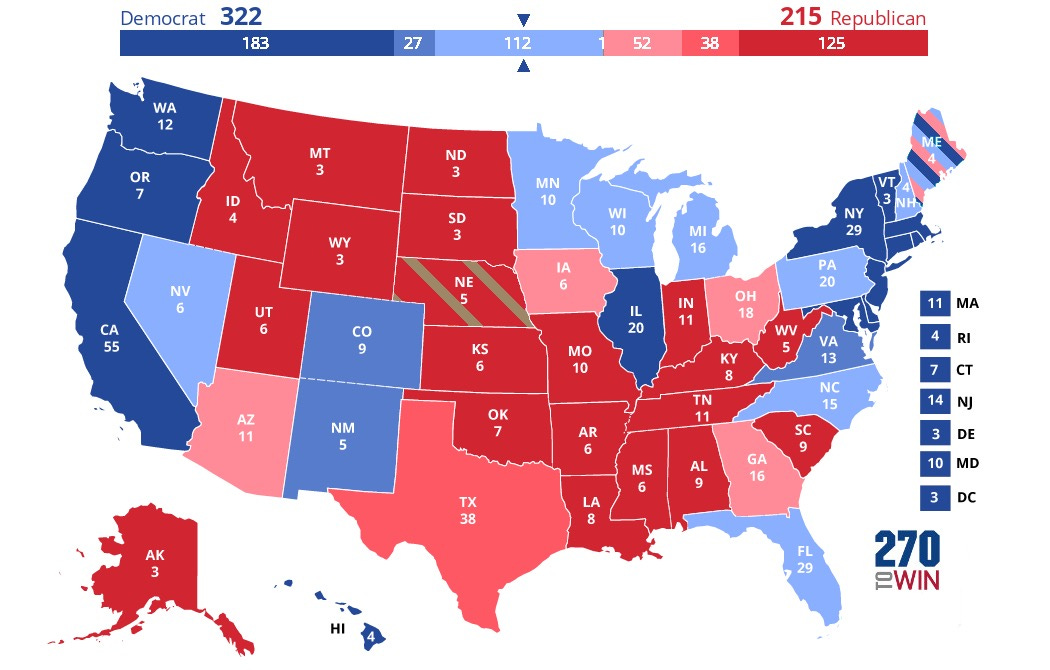Occam's Election
The simplest answer is also the most likely. Why is everyone discounting it?
Two pieces of news you may have missed with all of the excitement in Iran:
After publicly flirting with a New Hampshire Senate run for months, and even having President Trump talk him up, Corey Lewandowski announced that he will not run.
Mike Pompeo, who has long had his eye on a Senate seat in Kansas signaled that he will not run, either.
Combine this with the fact that 25 Republicans are retiring from the House—that’s 13 percent of the entire caucus—and you start to see the needle jumping around on the seismometer that’s tracking the 2020 election.
In a politically-successful presidency, the reelect is the period of maximum leverage for ambitious politicians who are close to the president. Because very few presidents have good second terms, the reelection is when people close to a popular president will use his power to slingshot themselves forward to create their own electoral bases of support.
That’s not happening right now. Instead, we have the opposite. Ambitious pols close to Trump are passing on races that should be winnable and rank-and-file Republicans are retiring.
This is not what it looks like when a successful president is closing in on a high-probability reelection campaign.
It’s the opposite. This is the birds swarming inland while the tourists on the beach enjoy the sun, thinking that since the ocean in front of them is calm, there’s no danger out over the horizon.
Because the final result of 2016 was so surprising, people have fixated on exotic scenarios for 2020.
That’s fair enough. Low-probability events happen all the time.
But the most likely scenario for 2020 is that the vice president for the last sitting Democratic president—who has led the primary field by a wide margin from the moment he declared—will win his party’s nomination.
And then what?
Again, let’s stipulate that on any given Tuesday, yadda yadda yadda. But we have some pretty clear polling data on what to expect in a Trump versus Biden election.
Biden has led Trump in all but three of the head-to-head polls taken this cycle. That’s 61 polls showing Biden leading, three polls showing Trump leading.
This is not an artifact of Trump just having a bad run. Right now Trump’s job approval is at 45 percent, which is just about the highest it has ever been. Biden is still leading him by an average of 5 points.
And that’s just the national number.
When you go to state-level polling, Biden’s position is also strong: His starting point is roughly 268 votes in the Electoral College where Arizona, Wisconsin, Florida, and North Carolina are the toss-ups. Biden has had small, but consistent, leads in North Carolina, Florida, and Wisconsin. And remember: This is before Democrats have coalesced around their nominee and while Trump is on a relative upswing.
What this means is that if the election was held today, the most-likely outcome would be this:

None of this is to say that Joe Biden will be the nominee and that he will win by 5 points and that he will capture 322 votes in the Electoral College. But of all the possible scenarios out there, that’s the most likely one. It’s the Occam’s Razor view of 2020.
And weirdly enough, it’s the view that seems to be least talked about by the general public, but the view that is predominating behind the scenes with Republican office-holders and office-seekers.
As he was bowing out of his prospective Senate run, Corey Lewandowski said, “I am certain I would have won.”
But of course, that’s not true. If Lewandowski was certain he would have become a United States senator—or even had a good chance to—then he would be aggressively pursuing that prize. Same for Pompeo. Same for the other Republicans retiring from Congress.
In a successful presidential reelection campaign, people run toward the fight because they sense opportunity. In unsuccessful reelection efforts, people look to insulate themselves so that they can preserve viability for a later date.
And it’s pretty clear which is which.



